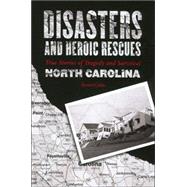
| Introduction | |
| The Great Fire, 1831 | |
| The Wreck of the Steam PacketHome,1837 | |
| The Wreck of theMetropolis, 1878 | |
| The Wreck at Bostian Bridge, 1891 | |
| The Hotel Zinzendorf Fire, 1892 | |
| The San Ciriaco Hurricane, 1899 | |
| The Wild West Show Train Wreck, 1901 | |
| The July Floods, 1916 | |
| The Influenza Pandemic, 1918 | |
| The Coal Glen Mining Disaster, 1925 | |
| The August Floods, 1940 | |
| The Atlantic Coast Line Wreck, 1943 | |
| The Highland Hospital Fire, 1948 | |
| Hurricane Hazel, 1954 | |
| The Crash of Two B-52 Bombers, 1961 | |
| The Crash of Flight 1016, 1994 | |
| The Speedway Disaster, 2000 | |
| The February Snowstorm, 2004 | |
| Table of Contents provided by Publisher. All Rights Reserved. |
The New copy of this book will include any supplemental materials advertised. Please check the title of the book to determine if it should include any access cards, study guides, lab manuals, CDs, etc.
The Used, Rental and eBook copies of this book are not guaranteed to include any supplemental materials. Typically, only the book itself is included. This is true even if the title states it includes any access cards, study guides, lab manuals, CDs, etc.
Excerpted from Disasters and Heroic Rescues of North Carolina: True Stories of Tragedy and Survival by Scotti Cohn
All rights reserved by the original copyright owners. Excerpts are provided for display purposes only and may not be reproduced, reprinted or distributed without the written permission of the publisher.